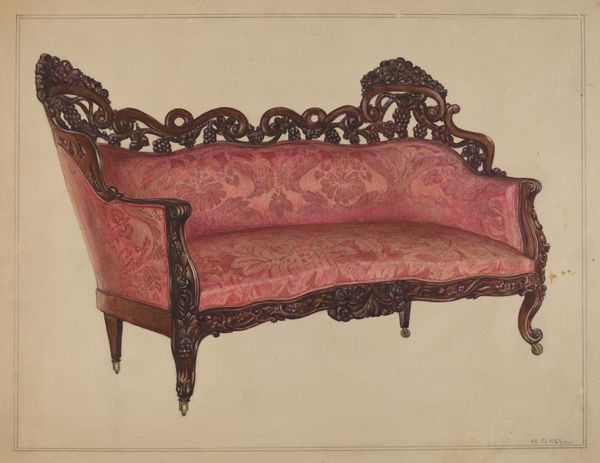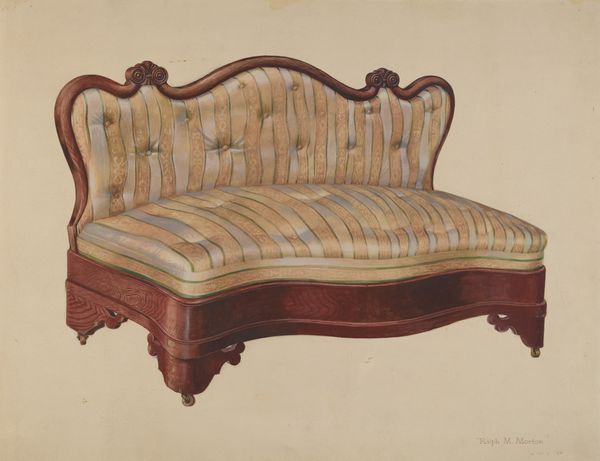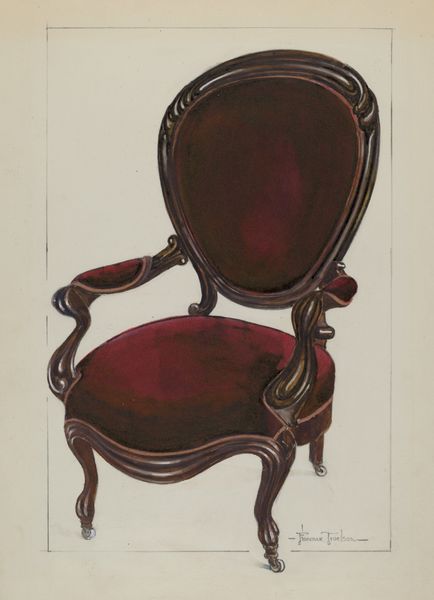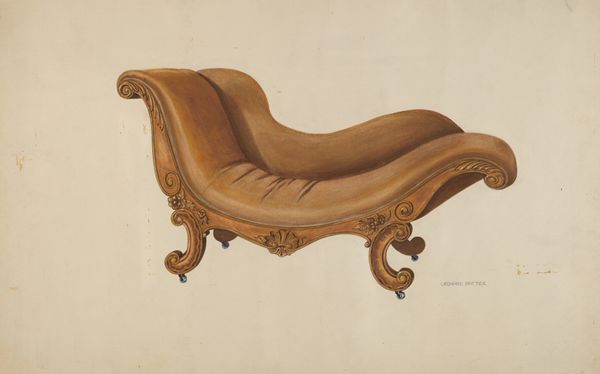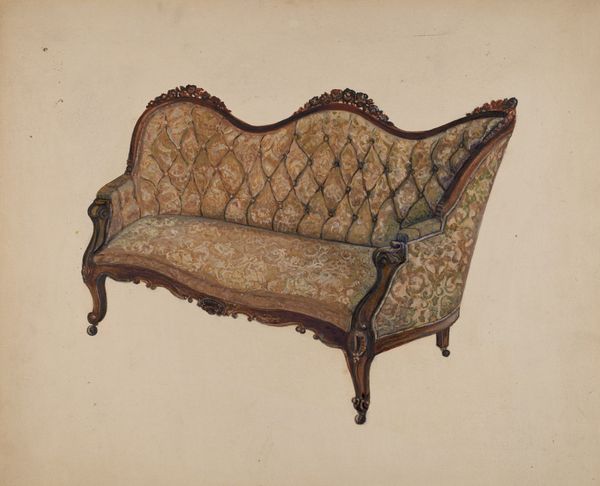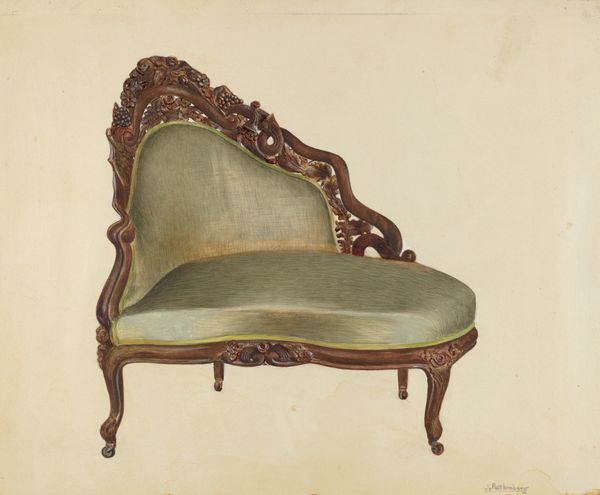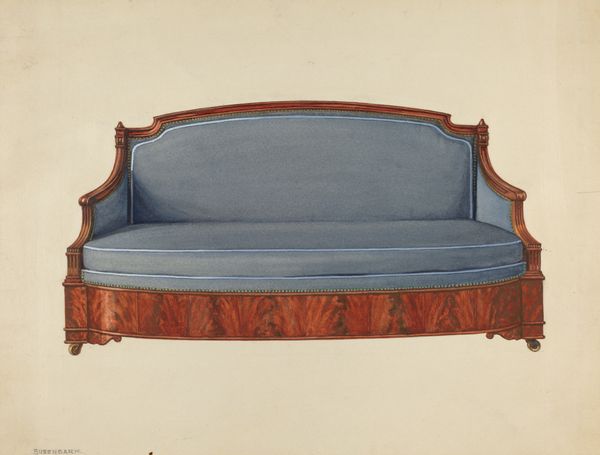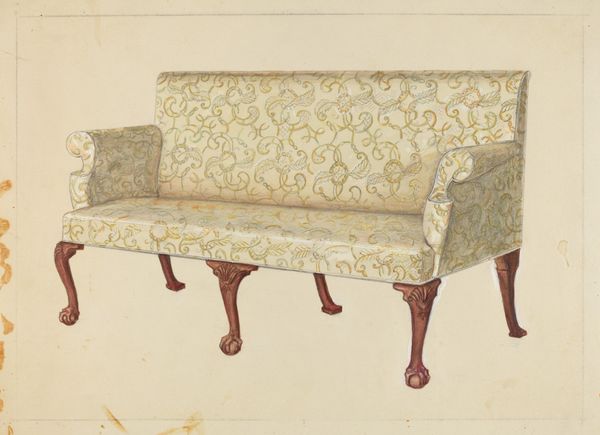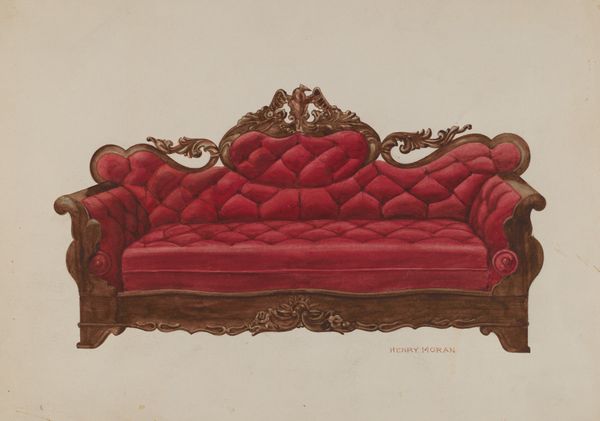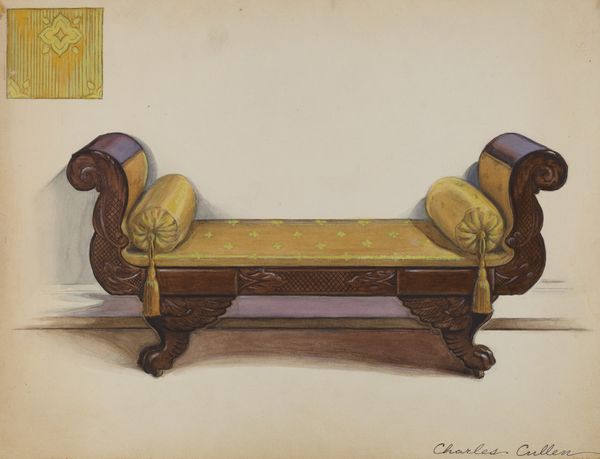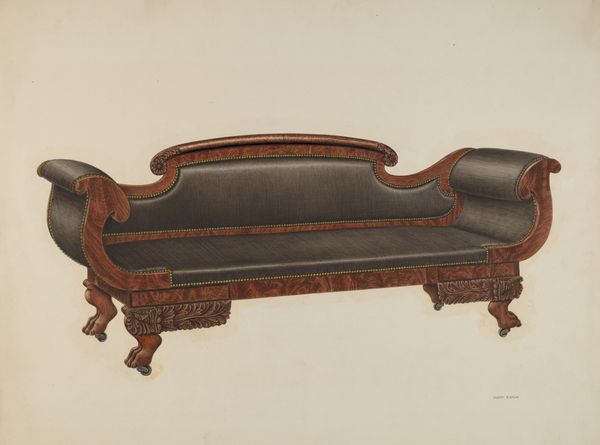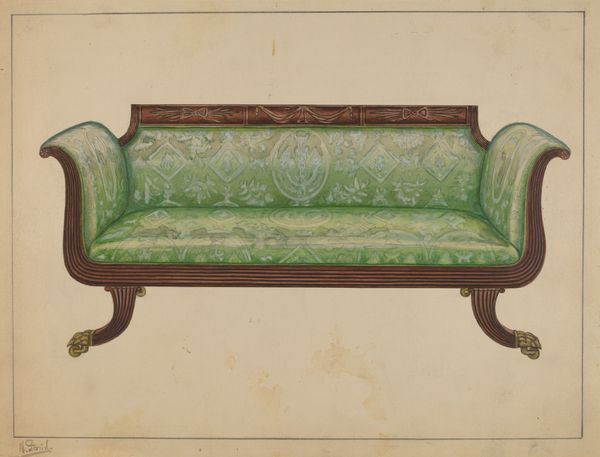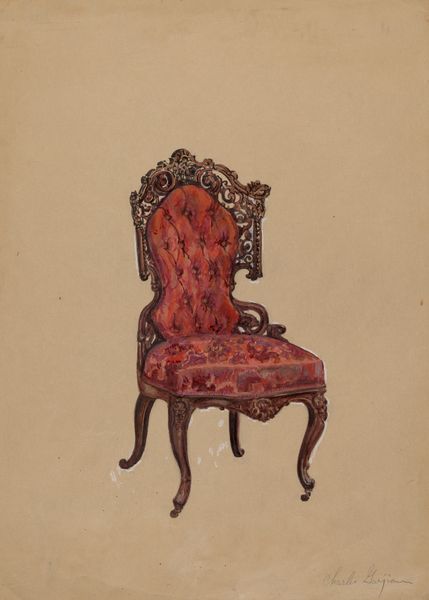
drawing, watercolor
#
drawing
#
watercolor
#
decorative-art
#
watercolor
Dimensions: overall: 22.9 x 30.8 cm (9 x 12 1/8 in.) Original IAD Object: 6'2 1/2"long; 42"high.
Copyright: National Gallery of Art: CC0 1.0
Editor: This watercolor drawing from around 1937, titled "Queen Anne Settee," and made by Florence Truelson, depicts an elegant piece of furniture in rich detail. The deep burgundy upholstery really stands out. What strikes me most is how this seemingly simple rendering points to a much larger material culture. What do you see in it? Curator: Indeed, beyond the surface, it highlights the material and labor intertwined in creating even seemingly simple furniture. Consider the wood: where was it sourced? By whom was it felled, processed, and carved? Similarly, the textile—the deep burgundy you mentioned—think about the fibers, the dyeing process, the weaving. Each stage involves human labor and global resource chains. Editor: That’s fascinating! I hadn't thought about tracing it back that far. It really underscores how even decorative arts are deeply rooted in economic and social structures. Does the date, circa 1937, give us any more clues? Curator: Absolutely. This piece, produced around 1937, during the tail end of the Great Depression, raises questions about consumption and access to luxury goods. Was this design intended for mass production, offering an affordable version of luxury, or was it geared toward a more exclusive clientele, thereby reinforcing social stratification? The materiality is never neutral; it reflects the values of a specific time. Editor: That makes so much sense. It seems like studying the "Queen Anne Settee" isn't just about aesthetics, but about uncovering the whole complex story of its creation and consumption. Curator: Precisely. The drawing, and what it represents, is a portal to understanding the interconnectedness of material, labor, and society, offering invaluable insights into the values that shape our material world. Editor: I'll never look at a watercolor of a settee the same way again. It’s amazing how much depth a seemingly simple image can hold when we start to consider the materials and the human element behind them. Curator: Agreed! Considering these components enhances our perception of artistic value and enriches our overall understanding of cultural history.
Comments
No comments
Be the first to comment and join the conversation on the ultimate creative platform.
